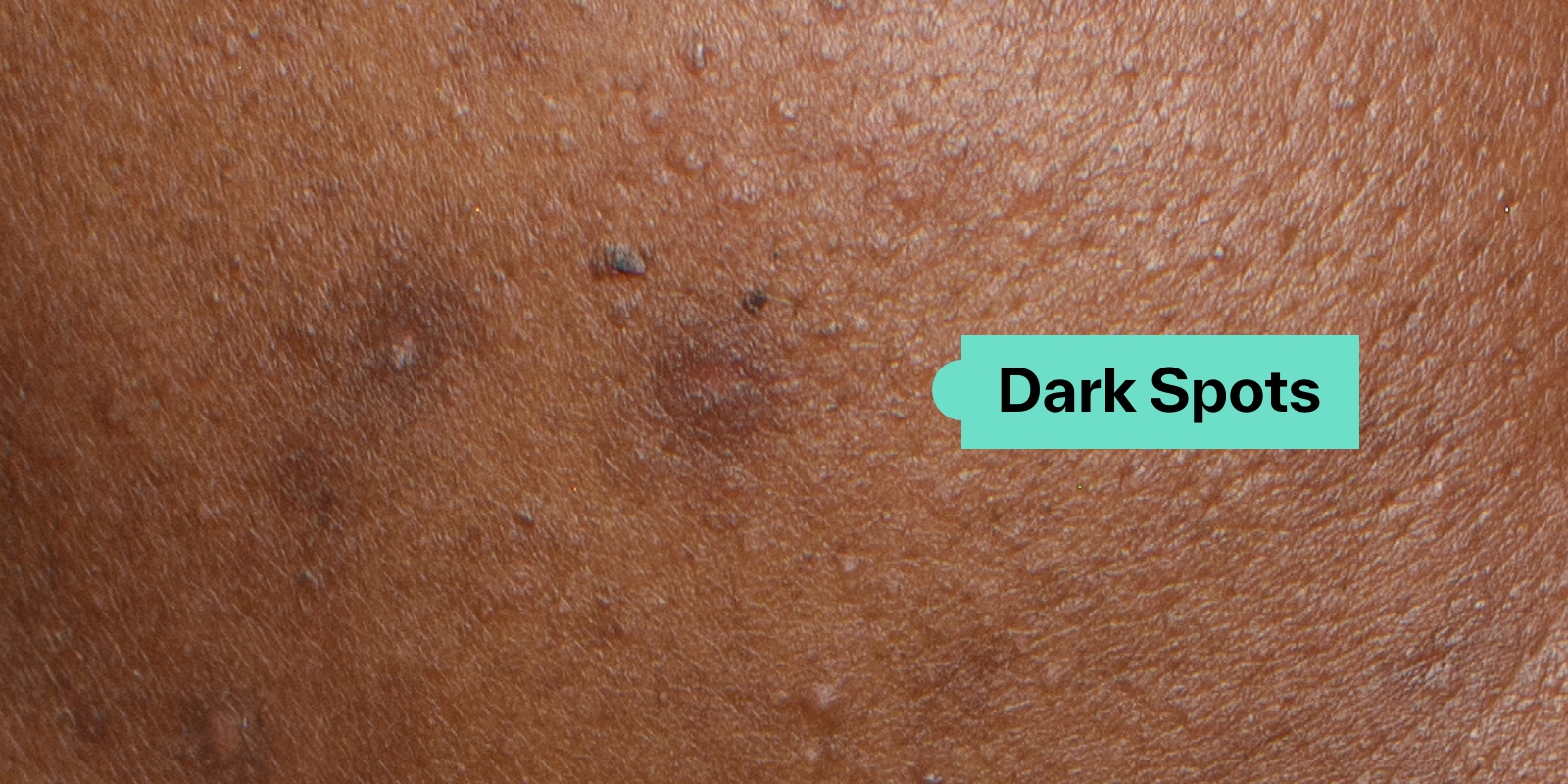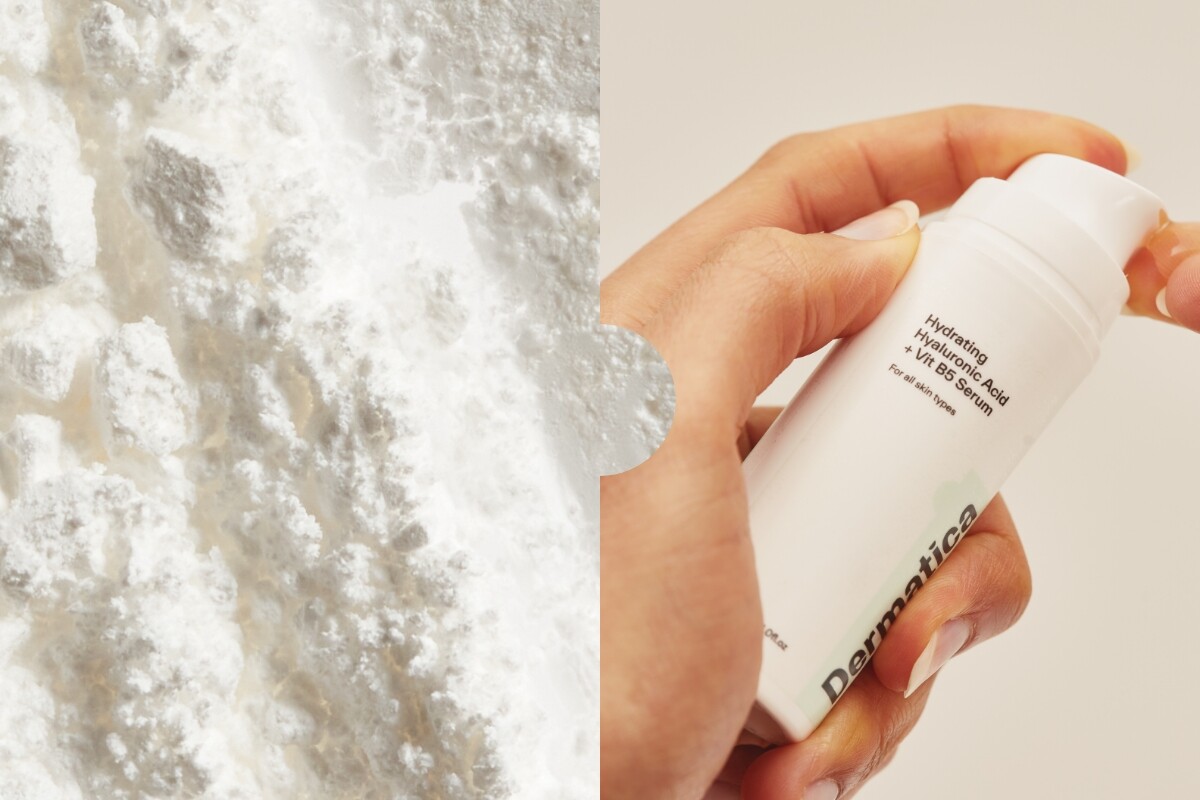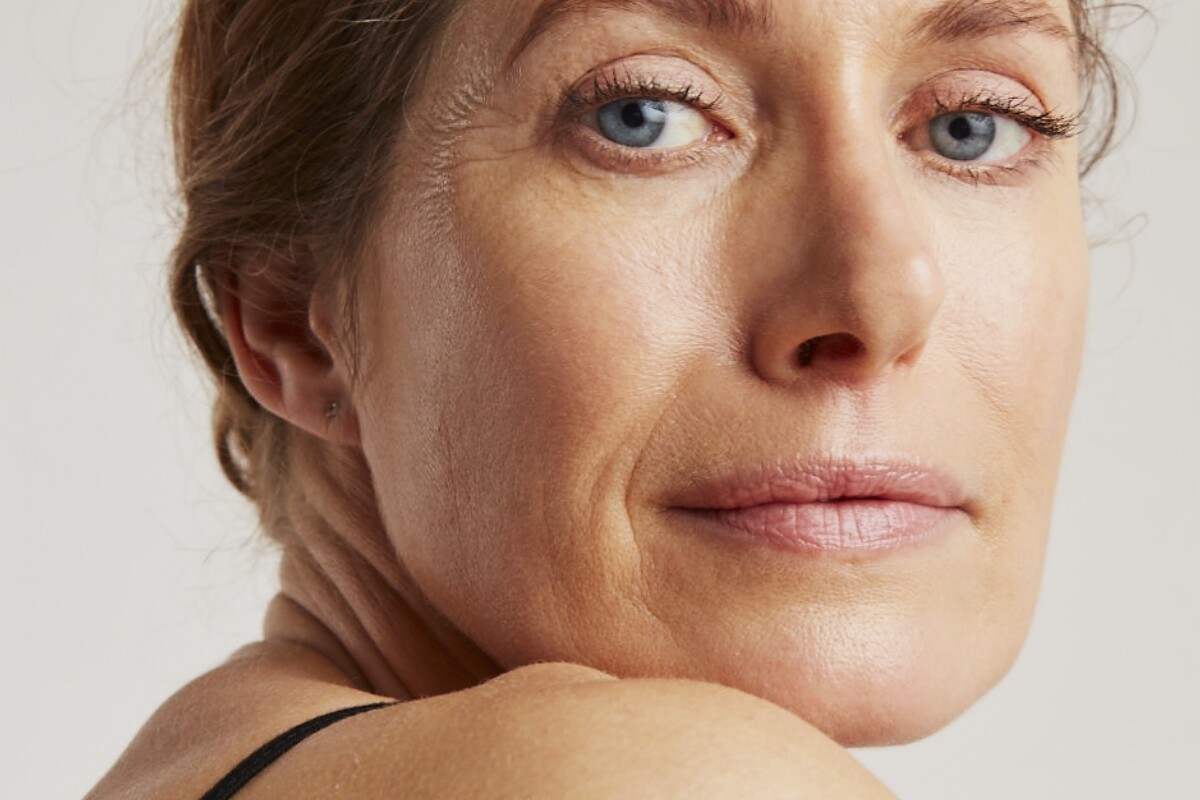If you’re wondering which skincare ingredients have rigorous research behind their ability to fade dark spots, our experts at Dermatica have created this article for you.
Dark spots are medically known as hyperpigmentation. It’s an umbrella term for any condition that causes your skin to produce too much pigment, which – as you may already know first hand – can take a long time to fade.
But if ever a list of ingredients could significantly improve the appearance of dark spots, it’s these.
Disclaimer: Many ingredients in this list are potent, some are even prescription strength. Unless we’ve explicitly said it’s safe to, always consult with a dermatologist or licensed dermatology professional before combining them. Not doing so could risk irritating your skin, damaging your skin barrier and potentially worsening your condition.
Types Of Dark Spots
As we mentioned above, uneven skin tone – or hyperpigmentation – is due to an overproduction of melanin in certain areas of your skin.
It includes a range of conditions, such as:
– Post-inflammatory hyperpigmentation (like post-acne marks, for example. This commonly occurs after a wound heals, such as after an acne lesion, irritation from skincare products, or rosacea).
– Sun spots from UV exposure (small, flat spots that can be light tan to dark brown or black in colour. Often called sun damage, age spots or liver spots)
– Melasma (large brown patches triggered by hormonal changes or sun damage, and easily triggered by heat or sunlight). (1)
Vitamin C
Topical Vitamin C, specifically L-Ascorbic acid, is an antioxidant that prevents free radicals from forming on the skin. Free radicals from pollution or cigarette smoke can cause oxidative damage to your skin, which can increase the production of the pigment in our skin known as melanin. (2)
Ascorbic acid is the form of Vitamin C we have the most data on, and it’s been shown to inhibit an enzyme in your skin
called tyrosinase, which is part of the melanin production process. (3)
There is a downside to this form of Vitamin C, however. Because it’s the active form, it’s very unstable and degrades easily when exposed to light and air. Once it degrades, it’s no longer effective.
With these factors in mind, if you want to give this ingredient a try, you’ll want to look for a product formulated with Vitamin E and ferulic acid, like our Vitamin C 15%: Fresh Batch Ascorbic Acid. Studies show this powerful trio of antioxidants make ascorbic acid more stable, and improve how well it penetrates into the skin. Dermatica’s Vitamin C booster is packaged in an air-tight, opaque bottle to prevent it from going bad too quickly. (4)
Vitamin C is best used in the morning as the second to last step of your skincare routine before sunscreen, so it can help scavenge free radicals that your skin is exposed to throughout the day.
Hydroquinone
Our experts at Dermatica will often prescribe this powerful brightening agent, because it’s been the gold standard treatment for hyperpigmentation conditions for over 50 years. It inhibits the tyrosinase enzyme that is crucial in the production of melanin.
Although in some countries like the US, low percentages of hydroquinone are available without a prescription, be careful. This ingredient can be irritating. Hydroquinone must be used in cycles with breaks in between, and supervised by a licensed dermatology provider. With long-term use, it may cause rebound worsening of hyperpigmentation, so you have to use it properly. Anything that can be irritating on the skin may worsen dark spots. (5)
Our dermatology experts recommend getting hydroquinone on prescription as it’s usually more effective. Plus it’s personalised to your skin under the supervision of a dermatology expert who can keep track of your progress, recommend which products to add or remove from your skincare routine, and make sure you get the best results.
Azelaic Acid
Like Vitamin C, azelaic acid is an antioxidant that prevents free radical formation and the overproduction of melanin.
In skincare products, azelaic acid also has anti-inflammatory properties, and it speeds up our natural skin cell turnover process. This benefit is great for reducing the appearance of, and preventing, hyperpigmentation. What’s more, it also kills acne-causing bacteria to help clear breakouts and break up closed comedones, which are commonly known as whiteheads.
If you have sensitive skin, or a skin condition called rosacea, our Clarifying Azelaic Acid Cream is an effective, non-prescription anti-inflammatory and dark spot corrector you can try.
Our Clarifying Azelaic Acid Cream is the only product that’s available in three different strengths: 12%, 15% and 20%, so you can find the right one to suit your skin. If you’re using prescription ingredients like retinoids or hydroquinone, you may want to ask your dermatology provider if and when it’s suitable for you to combine them. (6)
Topical Vitamin A (Retinoids)
Retinoids are the mainstay treatment for managing uneven skin tone. These include all types of topical (applied to the skin) Vitamin A, including prescription retinoids like tretinoin and adapalene as well as cosmetic retinols from a pharmacy or drugstore. All these ingredients can inhibit the enzyme tyrosinase to prevent your skin from producing too much melanin, and they all help boost skin cell turnover.
Skin cell turnover removes dead skin cells from the skin’s surface, which can help with clearing hyperpigmentation and smoothing out your skin’s texture, allowing for your natural, luminous glow to shine through. (7)
What’s more, if you use retinoids to treat hyperpigmentation, they can also help with signs of premature ageing from sun damage. Along with evening out sun spots, retinoids stimulate collagen production in the skin and thicken the epidermis. This helps soften the look of fine lines and gives your complexion a plumper, more youthful appearance, making them an effective cream for treating sun damage. (8)
Another side benefit is that tretinoin and adapalene also treat acne. They can help effectively calm active breakouts, fade current hyperpigmentation and prevent the uneven skin tone from returning. (9)
Retinoids are best used in the evening, as some forms of it aren’t stable in the presence of natural light. Apply your treatment to clean, dry skin, followed by a fragrance-free, ceramide-rich moisturiser like our Soothing Centella Gel Moisturiser for oily skin, or Nourishing Ceramide + Peptide Moisturiser for balanced to dry skin.
Kojic Acid
A relatively new ingredient to the science-backed skincare scene is kojic acid, which is derived from mushrooms and was discovered during the sake fermentation process.
Kojic acid is a copper chelator, which means it works by reducing excess copper in the body and preventing it from coming back. Since copper is a key factor in the enzyme tyrosinase, kojic acid essentially starves this enzyme. (10)
You don’t need a prescription for it and it’s suitable for most skin types, unless you have an allergy or very sensitive skin.
Glycolic Acid
Glycolic acid is a type of alpha-hydroxy acid (AHA) that chemically exfoliates your skin, and is derived from certain fruits as well as sugarcane. It works by gently dissolving dead skin cells and oils on the surface layer of the skin. Our experts at Dermatica prefer this over physical, grainy-textured scrubs which can be harsh, cause skin irritation and worsen dark spots.
Studies show that AHAs can help fade the look of skin concerns like dark spots, premature ageing from sun exposure (also known as photoageing) and acne. Glycolic acid can also improve the penetration of skincare products that are applied after it.
Depending on how concentrated it is, and the pH level (how acidic it is), glycolic acid will suit most skin types. However, because it is an exfoliant, be mindful when using it in your skincare routine if you’re also using retinoids, azelaic acid or other exfoliating ingredients. Only use these together if you know your skin tolerates the ingredients well, you don’t have sensitive skin and/or you’ve received personalised advice from your dermatology provider. (11)
Niacinamide
There are multiple benefits of niacinamide, which includes treating hyperpigmentation. It works by stopping neighbouring melanocytes and keratinocytes from interacting with one another, preventing pigment (melanin) from transferring between these two types of cells.
In simple terms, melanocytes are cells that make the pigment (melanin) in our skin, and keratinocytes are cells that transport melanin to our skin’s surface. Normally, this melanin is then shed during our natural exfoliation process, but when too much pigment is produced, the melanin clumps together – forming dark spots and uneven skin tone.
Niacinamide is also anti-inflammatory, and it can regulate sebum production to control excess oiliness in people with acne-prone skin. It’s also easy to add to your skincare routine, because it’s gentle enough on your skin barrier that you don’t have to worry about using too much. (12)
There’s also no need to have a dedicated niacinamide serum either, as percentages as low as 4% have been shown to noticeably improve the look of a hyperpigmentation condition called melasma. (13)
Tranexamic Acid
Not only does tranexamic acid (TXA) help to fade discolouration, it brightens your overall complexion. TXA can also help to reduce the appearance of post-inflammatory pigmentation from acne scarring.
We’re not entirely sure how tranexamic acid works on dark spots yet but studies show that it may help in these three ways.
Like niacinamide, it stops melanocytes and keratinocytes from interacting with one another.
It decreases tyrosinase activity, slowing down how quickly your skin produces melanin.
It helps to minimise blood supply. Stimulation from hormonal changes, inflammation, reactions, flushes and flare-ups may increase blood flow, which can raise the temperature in these areas and trigger pigmentation. (14)
Sunscreen
Last but most importantly, sunscreen. In fact, broad-spectrum sunscreen alone can and does improve the look of uneven skin tone. It’s also critical if you want any of the treatments we’ve mentioned to work.
Exposure to UV rays (ultraviolet radiation) from the sun – including sun that comes through the window – does worsen uneven skin tone. Both visible blue light and UVA rays are the main culprits for this, as they cause the more stubborn and early onset forms of hyperpigmentation conditions. (15)
Whether it’s mineral or chemical, any broad-spectrum sunscreen with SPF30+ that you love using will work great if you use it every day. To reduce the risk of irritation, choose a fragrance-free one designed for sensitive skin like SPF50 Photodamage Defence Sunscreen.
Find out what formulas are suitable for your skin by visiting our website.
References
1. Chen YM, Li C, Zhang WJ, Shi Y, Wen ZJ, Chen QX, et al. Kinetic and computational molecular docking simulation study of novel kojic acid derivatives as anti-tyrosinase and antioxidant agents. Journal of Enzyme Inhibition and Medicinal Chemistry. 2019 Jan 1;34(1):990–8.
2. Lawrence E, Al Aboud KM. Postinflammatory Hyperpigmentation [Internet]. PubMed. Treasure Island (FL): StatPearls Publishing; 2021. Available from: https://www.ncbi.nlm.nih.gov/books/NBK559150/
3. Lim HW, Kohli I, Ruvolo E, Kolbe L, Hamzavi IH. Impact of visible light on skin health: The role of antioxidants and free radical quenchers in skin protection. Journal of the American Academy of Dermatology. 2021 Dec;
4. Telang PS. Vitamin C in dermatology. Indian Dermatology Online Journal [Internet]. 2013;4(2):143. Available from: https://www.ncbi.nlm.nih.gov/pmc/articles/PMC3673383/
5. Lin FH, Lin JY, Gupta RD, Tournas JA, Burch JA, Angelica Selim M, et al. Ferulic Acid Stabilizes a Solution of Vitamins C and E and Doubles its Photoprotection of Skin. Journal of Investigative Dermatology. 2005 Oct;125(4):826–32.
6. Fabian IM, Sinnathamby ES, Flanagan CJ, Lindberg A, Tynes B, Kelkar RA, et al. Topical Hydroquinone for Hyperpigmentation: A Narrative Review. Cureus [Internet]. 2023 Nov 15; Available from: https://www.ncbi.nlm.nih.gov/pmc/articles/PMC10723018/
7. Sauer N, Małgorzata Oślizło, Brzostek M, Wolska J, Katarzyna Lubaszka, Katarzyna Karłowicz-Bodalska. The multiple uses of azelaic acid in dermatology: mechanism of action, preparations, and potential therapeutic applications. Postępy Dermatologii i Alergologii [Internet]. 2023 Jan 1;40(6):716–24. Available from: https://www.ncbi.nlm.nih.gov/pmc/articles/PMC10809820/
8. Callender VD, Baldwin H, Cook-Bolden FE, Alexis AF, Stein Gold L, Guenin E. Effects of Topical Retinoids on Acne and Post-inflammatory Hyperpigmentation in Patients with Skin of Color: A Clinical Review and Implications for Practice. American Journal of Clinical Dermatology. 2021 Nov 9;23(1).
9. Zasada M, Budzisz E. Retinoids: active molecules influencing skin structure formation in cosmetic and dermatological treatments. Advances in Dermatology and Allergology [Internet]. 2019 Aug;36(4):392–7. Available from: https://www.ncbi.nlm.nih.gov/pmc/articles/PMC6791161/
10. Leyden J, Stein-Gold L, Weiss J. Why Topical Retinoids Are Mainstay of Therapy for Acne. Dermatology and Therapy [Internet]. 2017 Jun 5;7(3):293–304. Available from: https://link.springer.com/article/10.1007/s13555-017-0185-2
11. Karwal K, Mukovozov I. Topical AHA in Dermatology: Formulations, Mechanisms of Action, Efficacy, and Future Perspectives. Cosmetics [Internet]. 2023 Oct 1;10(5):131. Available from: https://www.mdpi.com/2079-9284/10/5/131
12. Marques C, Hadjab F, Porcello A, Lourenço K, Scaletta C, Abdel-Sayed P, et al. Mechanistic Insights into the Multiple Functions of Niacinamide: Therapeutic Implications and Cosmeceutical Applications in Functional Skincare Products. Antioxidants [Internet]. 2024 Apr 1;13(4):425. Available from: https://www.mdpi.com/2076-3921/13/4/425
13. Navarrete-Solís J, Castanedo-Cázares JP, Torres-Álvarez B, Oros-Ovalle C, Fuentes-Ahumada C, González FJ, et al. A Double-Blind, Randomized Clinical Trial of Niacinamide 4% versus Hydroquinone 4% in the Treatment of Melasma. Dermatology Research and Practice. 2011;2011:1–5.
14. Zhu JW, Ni YJ, Tong XY, Guo X, Wu XP, Lu ZF. Tranexamic Acid Inhibits Angiogenesis and Melanogenesis in Vitro by Targeting VEGF Receptors. International Journal of Medical Sciences [Internet]. 2020 Mar 25 [cited 2021 May 7];17(7):903–11. Available from: https://www.ncbi.nlm.nih.gov/pmc/articles/PMC7163366/
15. Maddodi N, Jayanthy A, Setaluri V. Shining Light on Skin Pigmentation: The Darker and the Brighter Side of Effects of UV Radiation†. Photochemistry and Photobiology [Internet]. 2012 Apr 12;88(5):1075–82. Available from: https://www.ncbi.nlm.nih.gov/pmc/articles/PMC3400707/





